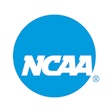Although the need for professional standards is widely acknowledged, IHRSA's new accreditation initiative is ruffling plenty of feathers in the personal-trainer certifcation industry

Bill Howland, director of public relations and research for the International Health, Racquet & Sportsclub Association, understands all too well how easily a negative perception of the fitness industry can take hold. He recalls his (if you will) Geraldo Rivera moment vividly.
"I had Hank Philippi Ryan, the consumer investigative reporter for the NBC affiliate here in Boston, walk into IHRSA's offices and interview me on camera with regard to the quality of trainers in health clubs and gyms," Howland recalls. "Right in the middle of the interview, she pulled out a personal trainer certificate with her name on it, which she had purchased online. She said, 'Bill, I logged on to this web site and for $39.95, they sent me my personal-trainer certificate. What do you think about that.' And I could only say, 'Not all certifications are created equal.' "
The fitness industry has been acutely aware of the need for professional standards for its employees for at least 15 years. Organizations serving aerobics instructors began offering professional certifications in the mid- to late 1980s; the push to certify personal trainers gained steam in the early to mid-1990s. It was about eight years ago, with the number of certification offerings spiraling upward, that representatives of several highly regarded certification bodies considered the merits of creating an all-encompassing certification that would forever end the public's level of confusion about which personal trainers were qualified and which were not. With myriad overlapping market constituents to contend with (club members, athletes, physical therapy patients, the deconditioned) and a sudden spike in economic self-interest among certification companies, that effort went nowhere.
Too bad. Because if people were merely confused by the perhaps 250 separate certifications offered by 75 certification companies, they are almost bound to be completely flummoxed by the different accreditation and licensure possibilities currently being discussed.
"If we'd collectively done something about this eight years ago," says Graham Melstrand, director of educational services for the American Council on Exercise (ACE), "it might not be the big mess it is today."
The whole certification/accreditation issue might have languished even longer had it not been for the October 1998 death of Anne Marie Capati. A 37-year-old fashion designer and mother of two, Capati joined a New York Crunch Fitness franchise earlier that year and began working with one of the club's personal trainers. Although she informed the trainer that she was taking prescription medicine for hypertension, it is alleged that he encouraged her to supplement her exercise and diet program with five drugs (one of which contained ephedra) and eventually accompanied her to a Vitamin Shoppe store to buy them. Three months after beginning this regimen, Capati became ill during a morning workout session with her trainer, suffered a stroke while at the club, and died later that night at a local hospital. (A $320 million lawsuit filed in June 1999 by her husband, which names Crunch Fitness, Vitamin Shoppe Industries, the trainer and the manufacturers of the supplements, has yet to come to trial.)
"Driven by fear and the unwanted attention that the Crunch lawsuit brought to the industry," as Melstrand puts it, IHRSA in 2002 began a new initiative to develop fitness certification guidelines for the industry as a whole. Convened by IHRSA, seven certification organizations drafted a policy that mandated certification by a nationally recognized group, continuing education and trainers' adherence to a code of ethics that, if violated, could result in revocation of their certification.
It was the notion of "a nationally recognized group" that stumped the panel of experts. While each of the seven policy drafters could claim their place in this lofty class, there were certainly others who could do the same. The pursuit of third-party accreditation had begun.
Through its deliberations, the group had determined not only the value of independent accreditation of personal training certification programs, it also identified the National Commission of Certifying Agencies (NCCA) as "an experienced, nationally recognized and respected" accreditation provider. Moreover, NCCA, the accreditation body of the National Organization for Competency Assurance (NOCA), accredited a number of health and wellness-related certifying bodies, including the American Academy of Nurse Practitioners, the American Chiropractic Neurology Board, the National Athletic Trainers' Association Board of Certification (NATABOC) and the National Strength and Conditioning Association (NSCA) Certification Commission.
NSCA's Certification Commission was, in fact, one of the seven groups convened by IHRSA. After the NATABOC, which gained its accreditation in 1982, NSCA had been the first to gain accreditation from the NCCA for its strength and conditioning expert certification (in 1994) and its personal trainer certification (in 1996). Once accreditation had been isolated as IHRSA's primary goal, IHRSA convened the "Industry Initiative Committee," a group of five (later six) organizations, again including the NSCA Certification Commission. That organization's executive director, Tom Baechle, says of these early meetings, "They really represented a diverse level of opinions, from those who supported the NCCA initiative to those who were opposed to it."
Even though representatives of some certifying bodies excluded from the early meetings doubt the accuracy of that statement, the meetings were attended by representatives of the Aerobics and Fitness Association of America, which had (and voiced) many concerns. AFAA, which began as a certifier of aerobics instructors and now estimates it certifies as many personal trainers as aerobics instructors, has since blistered IHRSA's "so-called 'industry-based' initiative," in the words of president Linda Pfeffer. In addition to what it sees as the committee's non-inclusivity, AFAA has circulated a list of concerns, charging that (for example) the initiative will have "a negative impact on employment opportunities for fitness professionals and competition in the industry." The group also has questioned "the legal implications of a select group of the largest competitive [certification] companies banding together and acting in concert to impose a rigid system on the fitness industry as a whole."
Other members of the Industry Initiative Committee say this sort of criticism misses the mark. Howland is careful to note that the measure passed by IHRSA's board of directors "recommends" - not requires - "that as of December 31, 2005, member clubs [emphasis added] hire personal trainers who hold at least one current certification from a certifying organization/agency that has obtained third-party accreditation of its certification procedures." In addition, after naming NCCA "as being an acceptable accrediting organization," the measure goes on to say that "other equivalent accrediting organizations may be recognized as well, as they come to IHRSA's attention." (IHRSA's membership of 4,200 U.S. clubs represents no more than one-fourth of the outlets that might offer personal-training services.)
Angie Wickstrom, vice president of operations for the National Federation of Professional Trainers (NFPT) - not one of the original committee members - says IHRSA's stance is a little disingenuous. "Unfortunately, what happens is that IHRSA recommends things to its member clubs, and each club in turn carves it in stone," Wickstrom says. "If IHRSA recommends it, it must be true."
"Our recommendation is just that," Howland counters. "Look, the problem we're hearing from our members is they have a quality control issue in that there are 75 different personal-training certifying organizations out there, some very good and very reputable, and others less so. Third-party accreditation is an effective way for these certifying organizations to distinguish themselves from less-credible providers. For club operators, it will be a useful aid in setting hiring criteria, but it won't be the only one. We recognize that education and experience are valuable and worthy criteria."
Of the committee's supposed exclusivity, Howland concedes, "There was definitely a leadership group. But one thing we saw as a real positive at our most recent meeting [attended by representatives of 16 different organizations] was that some of the smaller, lesser-known groups participated, and they all made clear their concerns that the practice of personal training be considered credible. Others, not just the big guns, have stepped up to say they want to be involved in the process."
The big guns say the criticisms reflect a lack of understanding about what accreditation entails. To begin with, proponents of accreditation are not concerned about "a negative impact on employment opportunities for fitness professionals" - that's the whole point, they say. As Melstrand succinctly puts it, "If employers didn't accept certifications of questionable quality, that route would have been cut off long ago. Until people's ability to be employed is affected, there isn't going to be positive change."
A typical set of criticisms appeared earlier this year on the web site of the National Strength Professionals Association, in the form of an open letter from NSPA president John Philbin. The first of Philbin's concerns began: "To my understanding, the NOCA/NCCA evaluates the organization's testing practices; looks at how the governance of the organization is put together; evaluates the financial means to support its membership over time; and establishes whether or not it is a high-quality organization. All of these evaluations are vague, subjective and will be proven by the organization's business reputation in the industry over time."
In fact, note accreditation advocates, NCCA's standards are not vague in the least. Standards relating to a certifying body's resources, for example, require the submittal of an organization's financial reports (in order that the NCCA may ensure that the group will be able to support "ongoing certification and re-certification processes") and a demonstration that it has adequate and knowledgeable staff to properly conduct certification activities. Most specific of all are the sections that deal with the appropriate assessment techniques for determining the validity of a certifying body's exams. Baechle, who having survived accreditation twice has the most intimate knowledge of the process of anyone in the fitness field, notes that the best way to figure out if certification tests are valid is to ask professionals what it is they actually do in their jobs.
"It's a process that begins with surveying a very large number of professionals in the field and asking three basic questions," Baechle says. "What do you need to know to do what you do. How frequently do you use that information. How important is it that your job be done correctly so as not to injure the client? And from that, you create a blueprint for the exam. That guarantees that you're going to be testing the competencies and knowledge skills you're supposed to test." Noting that the vast majority of certifying bodies have never validated their exams, Baechle adds, "After we went through the process in 1994, our exam was so much better than we ever imagined it could be."
That's a big plus for Mike Niederpruem, national director of certification and registry programs for the American College of Sports Medicine (ACSM), which is currently working on its NCCA application. "We're looking at the application process as a way for us to assess our weaknesses and strengths," Niederpruem says. "Everyone can benefit from this type of rigorous self-study. It's about continuous quality improvement and it's a way to make your standard operating procedures better. It was good for us, and now it'll become part of our standard business practice, perhaps even on an annual basis."
ACE, which recently became the second fitness-related certifying body to achieve NCCA accreditation, has noted changes not so much in its testing process - "We've always followed the proper processes and procedures," Melstrand says - but in its accountability. "We're now going to be audited by the NCCA every year, and they'll look at our pass rates, make sure exam forms and exam items haven't been overexposed (for security reasons), see if there have been any organizational structure changes that may cause conflict with respect to our impartiality, and so on," he says. "Accreditation is not a competitive club to wield against your unaccredited competitors; the purpose is to protect the consumer by ensuring safe and effective instruction of fitness professionals."
"Without accreditation, there's really no external audit that assures the public that the program you're putting people through is of a certain quality," says Denise Fandel, executive director of the NATA Board of Certification. "Anybody can start up a certification organization, but one of the first things you'd want to know as a consumer is, what is the quality of the program?"
More than that, lawmakers might also seek such an assurance. Currently, the fitness industry benefits from being largely self-governing; a couple more big-money lawsuits like the one filed following the death of Anne Marie Capati and legislators might clamor more loudly for state or federal action. Accreditation, Melstrand says, builds a foundation for this potential future. "If things do move in the direction of licensure, legislators will likely look at the processes in place rather than creating a whole new board exam," Melstrand says. "One of the first questions they'll ask is whether there is already a group of accredited credentials in the field."
Some in the certification field cover their eyes at the mention of a third level of regulation: personal trainers holding certificates, accredited by a third party, and then licensed by one or more states. Confusing?
"Of course it's confusing - it's government," Fandel says with a laugh, adding, "Licensure isn't necessarily a higher standard. We license dog groomers in some states. The thing about certification is that we recognize that a person has met a standard, but it has no legal weight. If the state has no regulation, and a trainer injures someone, we can take away the trainer's credential but it doesn't keep him or her from practicing and potentially hurting another person. But state regulation allows for criminal prosecution, which offers the public a higher level of protection."
In the months since IHRSA announced its recommendation, the situation has grown even murkier. Late last year, The International Sports Sciences Association, a personal trainer certification organization, created the National Board of Fitness Examiners (NBFE), with the stated purpose of developing and implementing a national board exam that would in essence license certified personal trainers. At about the same time, the NFPT organized and established twin initiatives: Ethics and Safety Compliance Standards (ESCS), in which trainers pay a $35 fee to receive an "ESCS Seal of Excellence," which means they agree to abide by a code of ethics; and the International Association of Fitness Certifying Agencies (IAFCA), a new trade organization that, significantly, makes membership status and voting rights incumbent on the active marketing of the ESCS Seal.
The NFPT's Wickstrom defends the IAFCA as a completely autonomous organization whose link to the NFPT will essentially be severed once other certifying bodies take a more active role in the association (there are currently 10 members).
"We're all scrambling around independently when we should be working together," Wickstrom says of the accreditation effort. "I think when certification organizations get deep enough into the accreditation process, they'll realize that the IAFCA is exactly what we need. People want to know whose pockets are being lined, but that's not it at all; there isn't even a membership fee."
Most of the bigger certifying organizations are openly dismissive of these efforts, painting them as acts of desperation by groups that won't be able to meet the new accreditation standards. But the ACSM's Niederpruem is one who says his organization is keeping an open mind.
"We've been in communication with their principals and have monitored them," he says. "If an opportunity presents itself and we think being involved in one or more of those programs will make our program better, we will probably consider it very seriously."
Indeed, Niederpruem says ACSM has offered to help those other organizations "to the best extent that we can, sharing our experiences, just as I turned to Tom Baechle at NSCA and Cedric Bryant at ACE when I had questions. It's a lengthy application."
With NSCA and ACE in the fold and ACSM likely to be the next to earn accreditation, the rest of the 70-odd certifying bodies have some work to do. As Melstrand points out as an example, the National Academy of Sports Medicine, which is working on its NCCA application, would be a good bet to earn its accreditation but for a major structural problem: its exams are currently conducted, non-proctored, online.
There is likely, then, to be a major shakeout in the certification business in the years ahead. By the time IHRSA's December 31, 2005, deadline passes for certifying bodies to achieve accreditation, there may be many small certifying companies forced out of business and personal trainers shut out of some jobs. This, though, will be a small price to pay for boosting the level of respect for the personal-training profession - and for warding off possible outside legislation.
Many see this as a late and inevitable consequence of the industry's innocent early years, when many personal trainers worked at the profession more as a hobby than as a career. Melstrand says this is something that should not be viewed through the rose-colored lens of nostalgia.
"At our meeting with IHRSA, one of the certification groups brought an attorney, and he said, 'Every other industry does this already, so to think that your industry could or should be any different, or be able to accredit itself, is foolish,' " says Melstrand. "We think it's high time that this has happened. Is it going to make a difference overnight? No. In the long term? Absolutely. Because we're moving the industry in the direction that every other credible profession - accounting, law, medicine, architecture - has already gone. All of their professionals are accredited through an independent organization. And, it's the accepted standard for all the other allied health-care professions, which is really what we do. If we want a legitimate part in the health-care continuum, then we have to be on par with what our peers do.
































